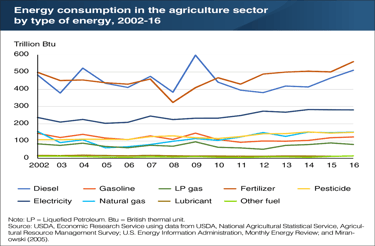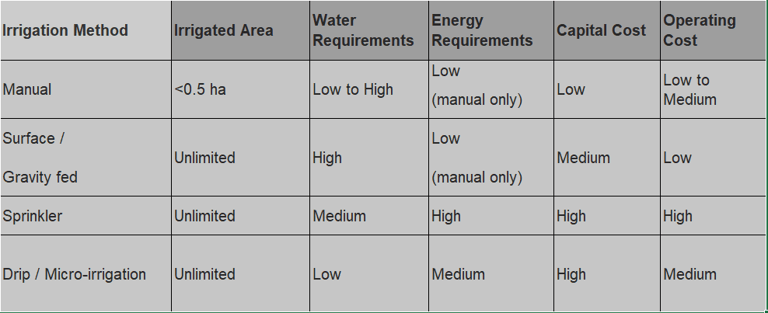The Hidden Kilowatts-Unpacking Agriculture's Surprising Energy Appetite
Your morning toast, your evening meat- have you ever thought about the invisible energy consumed to bring it to your plate? In an era predominantly focused on industrial decarbonization, electric mobility, and rapid expansion of renewable energy grids, agriculture, while often seen as distinct, is yet the least discussed when it comes to the global energy equation.
Aadesh Aslekar
6/15/20253 min read
Currently, we are juggling between two formidable challenges: feeding a rapidly growing population of over 8 billion people, projected to reach nearly 10 billion by 2050, while simultaneously striving for aggressive net-zero emissions targets and a profound global energy transition. While critical attention is rightly paid to scaling solar, wind, and battery technologies, a significant blind spot persists: the immense and often inefficient energy appetite of our global farms.
The agri-food sector currently consumes 30 percent of the total energy demand globally, both directly and indirectly, making it one of the largest energy consumers. Understanding and optimizing this consumption isn't solely an agricultural imperative; it's a pivotal challenge and opportunity for the global energy industry itself.
The Agro-food sector is heavily dependent on Fossil fuels, which play a pivotal role in the four stages of the industrial food production value chain: Input production, land use and agricultural production, processing and packaging, and retail, consumption, and waste.
Direct Energy consumption:
1. Farm Machinery:
Mechanization is a key input in any farming system, as it involves applying tools, implements, and machinery to enhance the productivity of farm labor and land. Farms consume energy in many forms, mainly diesel (44 percent of direct energy consumption), electricity (24 percent), natural gas (13 percent), gasoline (11 percent), and liquefied petroleum gas (7 percent).


2. Irrigation:
With growing water scarcity and the costs of large-scale irrigation schemes rising, there is a need to enhance productivity by improving existing schemes, expanding small-scale schemes, and developing water harvesting. Imagination is therefore of the utmost significance in the agricultural production process.
Electricity and diesel pumps tirelessly draw groundwater for irrigation, often from rapidly declining aquifers, consuming higher amounts of power and straining energy in agricultural belts worldwide.
The following table provides guidance on selecting irrigation technologies based on key criteria, including production scale, energy source, and budget.


Beyond field operations, considerable energy is required for heating and cooling controlled environments, such as greenhouses, operating sorting and grading machinery, and maintaining initial cold storage for perishable produce before it leaves the farm.
Indirect Energy Consumption:
1. Fertilizer Production:
Fertilizers and other chemical inputs to agriculture have proved important in the past in increasing food production in all regions of the world. Mineral fertilizers, chemical pesticides, fungicides, and herbicides all require energy in their production, distribution, and transport processes.
2. Processing and Packaging:
The Agro-processing industry transforms products originating from agriculture into both food and non-food commodities. Processes range from simple preservation (such as sun drying) and operations closely related to harvesting, to production, by modern, capital-intensive methods of such articles as textiles, pulp, and paper. Upstream industries are engaged in the initial processing of products, with examples such as rice and flour milling, leather tanning, cotton ginning, oil pressing, saw milling, and fish canning. Downstream industries undertake further manufacturing operations on intermediate products made from agricultural materials. Examples are bread and noodle making, textile spinning and weaving, paper production, clothing and footwear manufacturing, and rubber manufacturing.
Adding to this complex picture is the pervasive and often shocking issue of food loss and waste. Globally, an estimated one-third of all food produced for human consumption is lost or wasted across the supply chain, from farm to consumer. The tragedy of this waste extends far beyond the lost food itself; it represents a colossal squandering of all the direct and indirect energy that went into producing, processing, and transporting that food. Every kilowatt-hour used to pump water, synthesize fertilizer, or fuel a truck, if contributing to food that ultimately spoils, is energy squandered - a silent, yet massive, drain on our collective global energy budget and a significant contributor to emissions.
As we confront agriculture's staggering and often inefficient energy footprint, a pivotal question emerges for industry leaders and researchers: Is this vast sector merely an unavoidable energy drain, a silent consumer impeding our clean energy ambitions, or does it hold the untapped potential to become a powerful, green energy source itself? In our next article, we'll shift perspective to uncover how farms are increasingly poised to generate, not just consume, the energy of tomorrow.
References:
Energy within Food and Agricultural Value Chains - energypedia
Energy for Agriculture - energypedia
Appropriate Technology for Sustainable Food Security
Diesel Consumption of Agriculture in China
Future of Diesel Fuel in Agriculture and Other Industries - Fuel Logic
Energy, economics and environment conservation (EEEC) opportunities in post-harvest processing of maize: an empirical research for Indian marginal farmers | Environment, Development and Sustainability
Page not found - Global Alliance for the Future of Food
Food production accounts for 15% fossil fuel use, as big oil locks in dependence on petroleum-based
Connect
info@energizetomorrowus.com
© 2025. All rights reserved.


